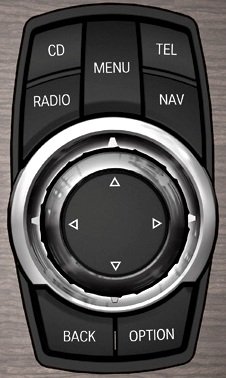| Explanation |
An Infotainment System allows the driver to access many of the features that can be offered on a vehicle which has become
necessary considering the many features and options a vehicle can have. The buttons and rotary knob for BMW's second generation i-drive Another similar concept followed by cars is the input system where one smartphone can have buttons to scroll through the menus and to input information or the phone can achieve these same functions by using a touch screen and have as minimal buttons as possible. The basic parts that make up an infotainment system, these parts are
Most of the functions and luxury features of a vehicle can be controlled via the infotainment system. The exceptions in most systems are the basic automotive features such as the air condition controls, basic radio buttons and dials, the headlamps, indicators and the windscreen wipers. There are too many features in many of the high end vehicles to just list them all out in buttons all over the interior of the car. This is where the infotainment system comes in to be able to control the many features with a few switches or a single touch screen. The screen also serves as the display for the reverse camera and most night vision assist systems. The almost universal features to be operated using the infotainment system will be telephone functions, the navigation, advanced radio functions including satellite radio, telematic services, allowing bluetooth streaming or wired connections to cell phones, iPods and other mp3 players, even game consoles. Infotainment systems are used to control and/or display almost everything on the vehicle. Even features that are operated by buttons or switches external to the infotainment system a display still shows up temporarily in the infotainment screen. One example would be the power seats which have dedicated controls but adjustments can be seen on the screen in some vehicles. Some of the popular names of infotainment systems on the market today are BMW's i-drive, Audi's MMI (Multi Media Interface), Mercedes Benz Comand and Ford Sync/My Ford Touch but most of the systems on the market are not known by any particular name. |
| External Links |
| Detailed Explanations Videos |
|
[?] Subscribe To This Site
|
| Random Topics |
| Other random topics of WhyHighEnd? |




